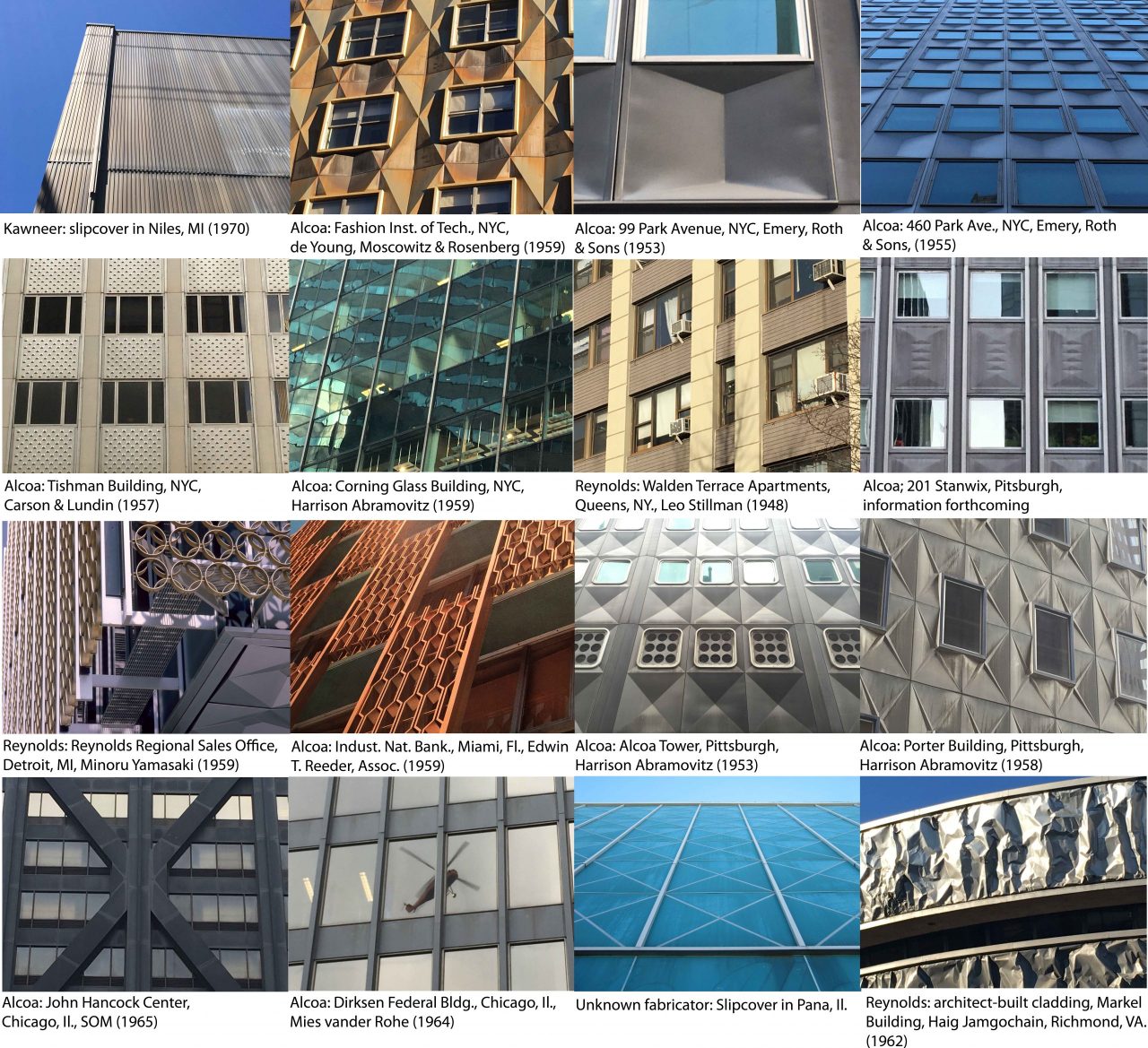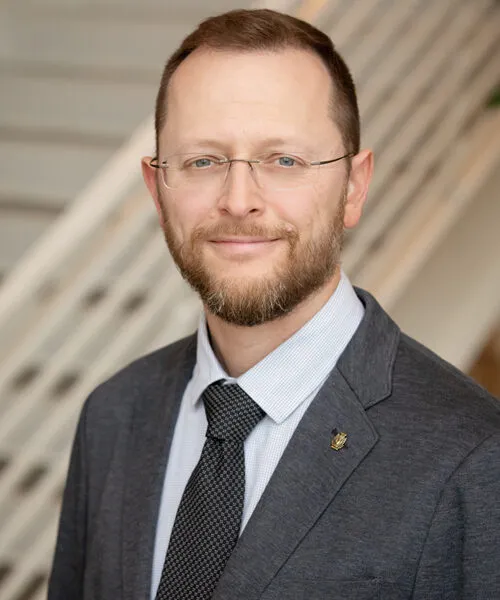About Dr. Johnson
Biography
Tait Johnson is an architect and architectural historian with a primary research focus on the history and theory of modern architecture and materiality in the twentieth century, specifically concerned with the image and instrumentality of aluminum in architecture.
Johnson’s research is published as an essay entitled, “The Decorative Modernism of Aluminum Cladding: Architecture and Industry” in the book Constructing Building Enclosures: History, Technology and Poetics in the Post War Era (Routledge, 2020), and in the International Journal of the Constructed Environment, presented at the Vernacular Architecture Forum, the Society of Architectural Historians annual conference, and meetings of the Construction History Society of America. His ongoing research explores the history of speculative design and futurist architecture, initiated by curating the exhibition, “Speculative Design of Future Cities: The Drawings of Gerald Exline,” at the Architecture Gallery, Illinois School of Architecture (2017.)
The majority of Johnson’s work in professional practice has been in the hospitality sector, designing hotels, theaters, and resort facilities/amenities in the Midwest and Southeastern United States. His architectural journey began by apprenticing with A. Richard Williams, FAIA, after which he became a partner and licensed architect in the small Midwestern firm General Design. In this firm he has practiced for over 20 years.

A sampling of Dr. Johnson’s research on aluminum cladding
Education
- Doctor of Philosophy, History and Theory of Architecture, University of Illinois at Urbana-Champaign (2017)
- Master of Education, Higher Education, Harvard University (2010)
- Master of Architecture, University of Arizona (1998)
- Bachelor of Architecture, Oklahoma State University (1997)
Research and publications
Ongoing and upcoming research
Projects
Polite Forms of Social Living
The project “Polite Forms of Social Living: Alcoa’s Twentieth-Century Show Houses” examines the overt promotional messages targeted to buyers of the “Alcoa Care-free Home.” By claiming to exploit “aluminum’s unique personality” in which “space comes alive,” the Alcoa Care-free Home reveals a belief in material agency to enact an emotional and sensorial experience, an approach that permeated design thinking and marketing to suburban consumers eager for a new start after the ravages of World War II. This research aims to explain how producers’ beliefs about material agency underpinned the vast expansion of aluminum into the building products market.
Aluminum Cladding and the American Commercial Landscape
The book manuscript “Aluminum Cladding and the American Commercial Landscape” develops dissertation research centered on the history of aluminum in twentieth-century architecture. In the postwar United States, aluminum became more widely used than any other metal in building construction except for steel. It was first produced in the early nineteenth century, finding architectural uses in the latter part of the century. By the 1960s, it was broadly employed to clad buildings in the form of frames, panels and screens. This research examines the way in which commercial aluminum cladding was marketed as both instrumental in modernization and an image of modernity.
The Decorative Modernism of Aluminum Cladding
The essay “The Decorative Modernism of Aluminum Cladding: Architecture and Industry,” examines mid-century works such as Minoru Yamasaki’s Reynolds Metals Regional Sales Office in Detroit (1959) with its shimmering screen of gold-anodized aluminum. This research shows that modernist architects working with aluminum, rather than rejecting decoration, promoted it as the appropriate response to the landscape of postwar consumerism in the United States. It was published in the book, Constructing Building Enclosures: Architectural History, Technology and Poetics in the Postwar Era, ed. Clifton Fordham (Routledge, 2020).
Selected publications
Johnson, Tait. “The Decorative Modernism of Aluminum Cladding: Architecture and Industry.” In Constructing Building Enclosures: History, Technology and Poetics in the Post War Era, edited by Clifton Fordham. New York: Taylor & Francis / Routledge, 2020.
Johnson, Tait. “Regulation, Profit and Power: The Transversal Relationships of Aluminum Cladding Production,” Proceedings of the ACSA 2018 Fall Conference, Milwaukee, Wisconsin, October 11, 2018.
Johnson, Tait. “Modernizing Downtown: The Aluminum Town Square of Paola, Kansas,” The International Journal of the Constructed Environment, Volume 7, Issue 3, 2016.
Teaching and advising
Classes taught
- Architecture of the United States (Spring 2021, 2020)
- Modern and Contemporary Global Architecture (Fall 2020, 2019)
- Studio: Design and Performance (Fall 2020)
- Design and Construction Futures (Spring 2019-ongoing)
- Studio: Graduate Integrative Design and Construction (Fall 2018)
- Theory of Architecture (Fall 2016, 2013)
- Studio: Architecture and the Landscape (Fall 2014)
- Discover Architecture Studio (Summer 2013)
